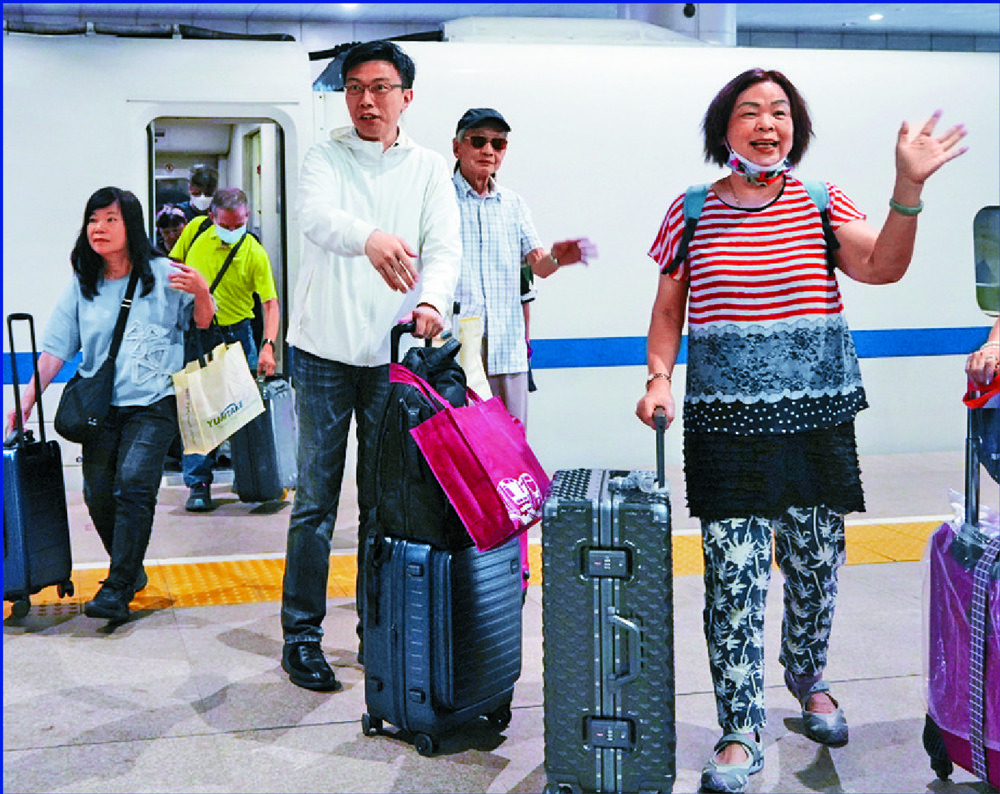 Passengers who arrived in Beijing said they enjoyed their trip, including Lam Sai Hun, who did some exercise before going to bed. Below, travelers arrive in Hong Kong. SING TAO
Passengers who arrived in Beijing said they enjoyed their trip, including Lam Sai Hun, who did some exercise before going to bed. Below, travelers arrive in Hong Kong. SING TAO


 Previous Next
Previous Next
Ira Wang
About 600 passengers, including Minister of Transportation and Logistics Lin Caixiong, arrived in Beijing yesterday morning aboard the first high-speed rail sleeper train.
Lam said she “slept soundly” during the 12-hour journey and that Hong Kong would be in contact with mainland Chinese authorities to increase train frequencies and expand services to northwest China.
“After waking up at 5.30am, I sat in the dining car admiring the surroundings and had a coffee, something I don’t normally get to experience. [on airplanes],” He said.
Lam said trains leaving Hong Kong at night and arriving in Shanghai or Beijing in the morning would offer passengers a fresh experience.
Lam also met with Chinese railway officials and representatives from Hong Kong's high-speed rail operator MTR Corp to discuss ways to further enhance rail services on the Hong Kong section of Beijing.
Passengers said they enjoyed their sleeper train journey, despite some noise.
Leung, a university student who was in Beijing as part of a group of 25 people for a summer internship program, said she had slept well.
“I went to bed around midnight and woke up at 5am. There was some noise from next door but I slept all night,” Leong said, adding that he felt refreshed when he got off the train.
Five lawmakers traveled to Beijing by train, including Ben Chan Hang-pang, who hopes the sleeper train will attract more tourists to Hong Kong and promote people-to-people exchanges between Hong Kong and mainland China.
Zhang said he hopes more sleeper classes will be introduced on trains to Beijing, as currently sleeper trains to and from Beijing only have four-person rooms, while sleeper trains to and from Shanghai have deluxe rooms for two people.
Tourism sector assemblyman Perry Yew Pak Leong said the experience was “wonderful”.
Yao added: “The tourism industry will strive to further develop high-speed rail-related products in the hope that tourists will become accustomed to this mode of travel and more cities will be connected to Hong Kong by sleeper trains.”
But trains to Beijing leave Hong Kong at around 6pm, too early for office workers, and they suggested adjusting the timetable.
The first sleeper train arrived at Shanghai Hongqiao Station yesterday morning, with Liu Junsan, Vice Minister of Transport and Logistics, boarding it.
Minister of Culture, Sports and Tourism Yeung Yun Hung visited West Kowloon Station to distribute souvenirs to passengers who arrived in Hong Kong by sleeper train from Beijing and Shanghai. Minister Yeung said the service has helped tourists plan their trips and contributed to the development of Hong Kong's tourism industry, and has received good response from passengers.
Tourist Wang said taking the sleeper train would save him half a day, making it more cost-effective than flying.
MTR CEO Jacob Kam Chakpui said the sleeper train service has “received an overwhelming response”.
He also said the MTRC hopes to offer more travel options over the summer holidays.
Kam added that the company would first consider the requests before discussing them with mainland Chinese authorities.
email address



